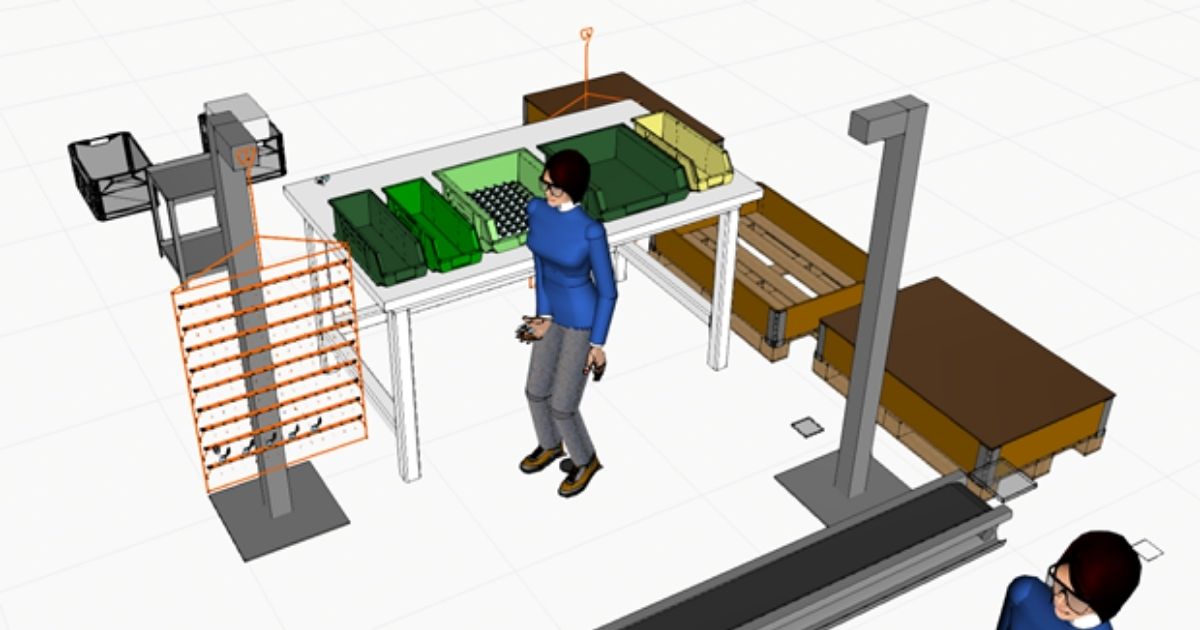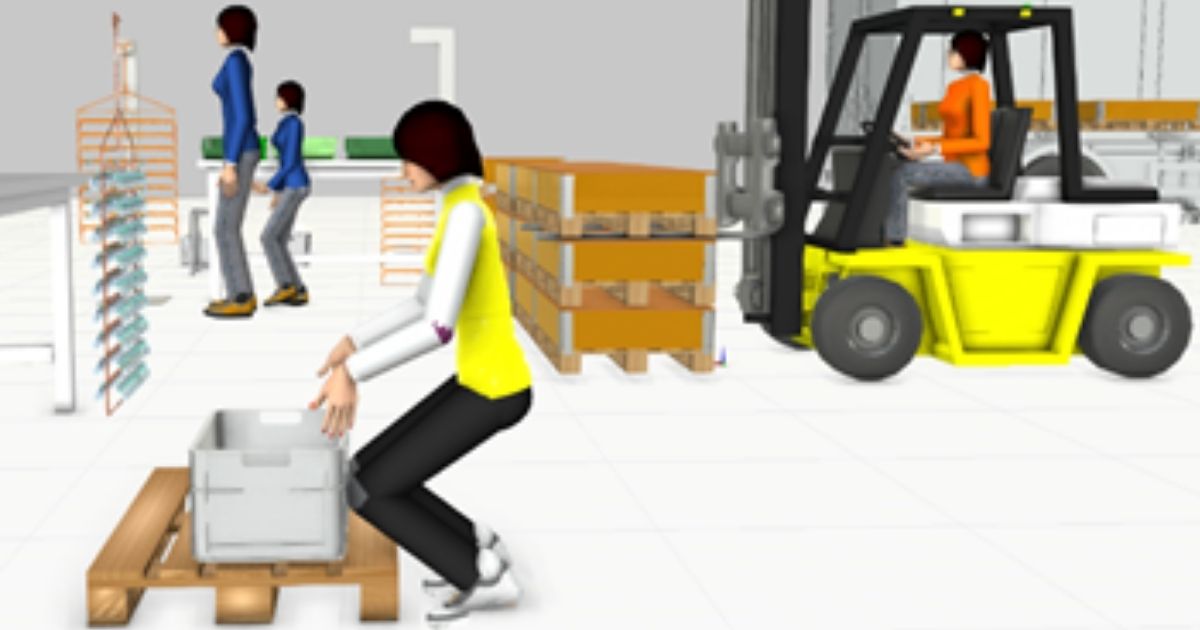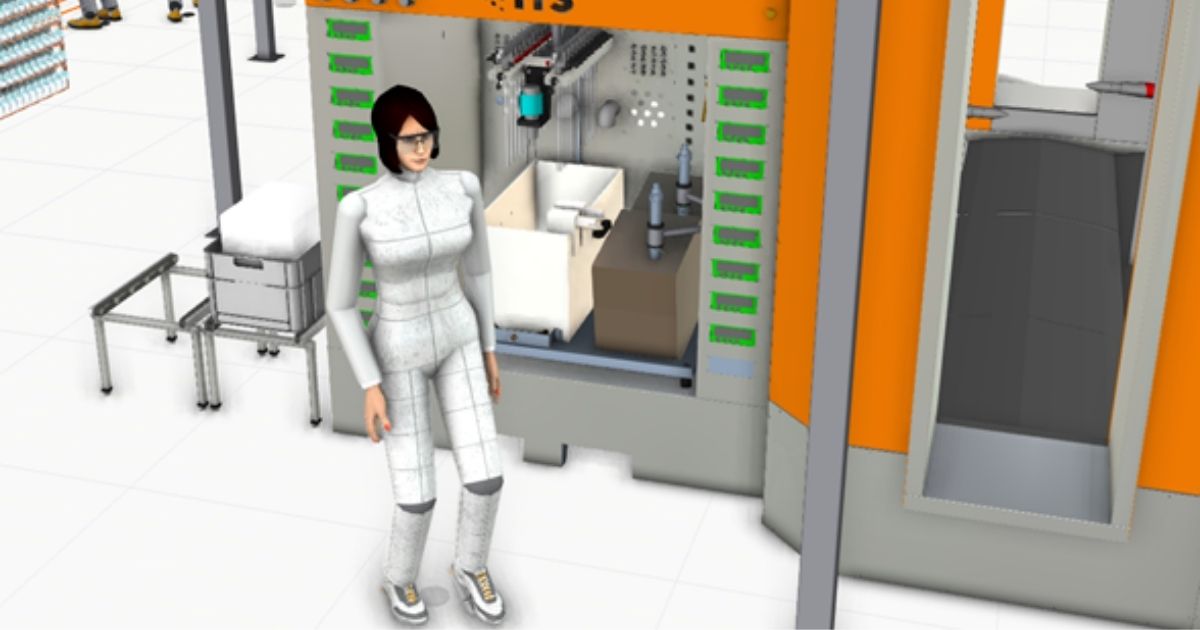Before assembly, it is appropriate to commission such technology virtually prior to installation and the actual start-up of production technology, typically a painting line. The aim of such a simulation is to verify all direct and related operational processes.
Why verify
The operation of a painting line is a set of many sub-processes, which form one complex unit. These days, when every second of production time generates a profit or loss (depending on how we manage this production time), one of the goals is to reduce the time spent by starting the line and tuning individual processes to a minimum.
Today’s computer technology is already at such a level that it allows us to create a virtual model of the paint shop, in which physical laws, technical standards, legislative limits or performance requirements set by customer are implemented. Thanks to this, we are able to fully simulate the complex operation of the paint shop and recognise in advance the bottlenecks, dangers or other circumstances that may negatively affect the operation. The actual start-up of the line then takes a significantly shorter time, which has a positive effect on the economic result.
What can be simulated
With a bit of exaggeration, we can say that literally everything can be simulated. Therefore, it is becoming a common standard, especially in the automotive industry, that offers for supplying new technology must include a virtual model with predefined parameters, which will allow the customer to simulate operation before concluding a contract.
The main areas of the simulation include:
• Hanging
• Painting process
• Line tact
• Service procedures
• Time fund
• Personnel load
• Logistics
• Handling space
• Safety


Hanging
When designing and implementing a paint shop, we often encounter the customer’s opinion that hanging is a simple and trivial operation, in which there is no need to “waste time”. The opposite is true. You can lose and gain a lot during the hanging process, because even such a “banal” activity includes other subsets of operations.
The basic questions are:
• How much space do I need for safe and efficient hanging? How big are the painted parts and hanging devices?
• How many workers will hang up the products at the same time? Will they have enough space so that they will not obstruct each other and slow each other down?
• Do I have enough space in the hanging area to store the operation stock of hanging devices and products?
• How long does hanging actually take? Does it match the line tact? Can the hanging up become the line’s bottleneck?
The fact that you can answer all of the above questions does not guarantee that it will actually work that way. To verify these parameters and values, the simulated hanging process can be successfully used.
Operational activities
The speed of the line, its capacity, passage profile of the paint shop matching the size of products, etc. are the basic parameters used for designing the paint shop. As a matter of course, it is appropriate to verify these parameters, but such verification usually takes place before the offer is submitted and is an activity of the potential technology supplier.
However, there are also a number of related activities that are no less important for the operation of the paint shop. The most common ones include cleaning the paint booth, changing the paint and routine maintenance of the line. It is appropriate to subject all three of these operations to simulation in order to verify:
• How long will these tasks take? So, how long will the line not be working / generating profit?
• Can I use this time for other related activities and shorten the downtime, i.e. make the whole process more effective?
• Is the safety of workers and technology ensured during maintenance and service?
• Does anything prevent securing the above activities? Whether it is spatial limits or other circumstances?
Handling, logistics
Another, but definitely not the last, important area is handling and logistics. By handling, in addition to the above-mentioned hanging of products, we mean, for example, the carrying of various loads. Their size and especially their weight can affect the performance of the workers—yes, even this can be simulated on the basis of data available today. Of course, it is also possible to verify sufficient space for the movement of handling equipment (did you wonder how much space does the forklift truck need for turning?), how much time is needed to bring products to the place of hanging or unhanging, or how the safety aisles are designed.
These and many other issues often remain unresolved and cause considerable difficulties in commissioning a new paint shop.
ITS, as one of the first Czech manufacturers of painting lines, offers a comprehensive service of Virtual Commissioning of Technology as an additional service when implementing the line.


